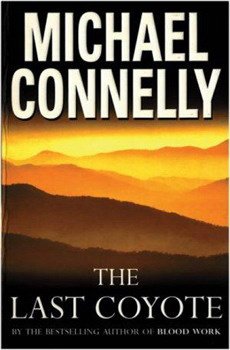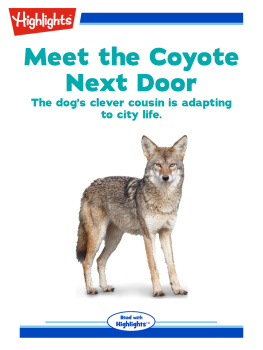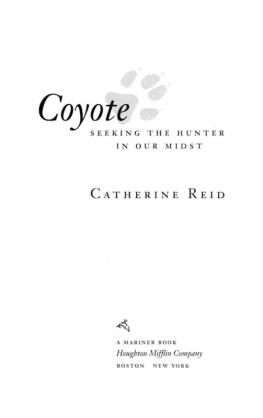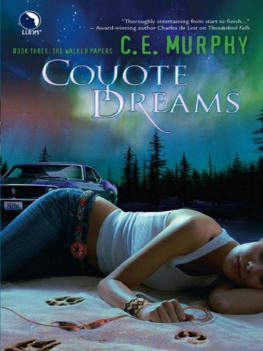THE RAINMANS THIRD CURE

Copyright 2015 Peter Coyote
All rights reserved under International and Pan-American Copyright Conventions. No part of this book may be used or reproduced in any manner whatsoever without written permission from the publisher, except in the case of brief quotations embodied in critical articles and reviews.
Copyright 1966 by Dwarf Music; renewed 1994 by Dwarf Music. All rights reserved. International copyright secured. Reprinted by permission.
Library of Congress Cataloging-in-Publication Data
Coyote, Peter.
The rainman's third cure : an irregular education / Peter Coyote.
pages cm
1. Coyote, Peter. 2. ActorsUnited StatesBiography. 3. Motion picture producers and directorsUnited StatesBiography. I. Title.
PN2287.C64A3 2015
791.4302'8092dc23
[B]
2014044879
Cover design by Kelly Winton
Interior design by Megan Jones Design
COUNTERPOINT
2560 Ninth Street, Suite 318
Berkeley, CA 94710
www.counterpointpress.com
Distributed by Publishers Group West
10 9 8 7 6 5 4 3 2 1
e-book ISBN 978-1-61902-635-3
Now, the Rainman gave me two cures,
Then he said, Jump right in.
The one was Texas Medicine
The other was just Railroad Gin.
And like a fool I mixed them
And it strangled up my mind.
And now people just get uglier
And I have no sense of time.
BOB DYLAN
Stuck Inside of Mobile with the Memphis Blues Again
One of the most important things to do is to keep cutting deliberately through political lines and barriers and emphasizing the fact that these are largely fabrications and that there is another dimension, a genuine reality, totally opposed to the fictions of politics....
THOMAS MERTON
For all my teachers, but especially for:
Susie and Ozzie Nelsonthere are no words to express my gratitude.
My sister, Elizabeth West, the person Id most have liked to become.
Gary Snyder, my first model of a fully-dimensional life.
Nino Cerruti, who offered me a second chance at a father.
Chikudo Lewis Richmond, my Buddhist teacher.
And Stefanie, for the deepest lessons.
CONTENTS
T HIS BOOK HAS passed through a number of iterations, beginning as a political screed that effectively smothered the true book inside it. Once again, I am grateful beyond measure for the acuity and unvarnished honesty of my old friend and fellow writer, Terry Bisson, for helping me carve away the dross. The same credit needs to be shared with Stephen Molton, another fine writer who applied his intelligence and encouragement tirelessly to help me, and my dear friend Terry Strauss for her close read and comments. My sister, Elizabeth West, was an indefatigable ally who read and reread subsequent drafts, asking cogent questions, pointing out confusions and ambiguities that helped me clarify my intention in every case.
Once again, I am indebted to Counterpoint Press and Jack Shoemaker. While agents were dithering about how to position this book, Jack stepped up immediately to claim it. As with Sleeping Where I Fall, the process of transforming the manuscript into a book has been an authors dream from the beginning to final publication. I have to single out Kelly Wintons fine editing; Megan Fishman, director of publicity; and her able staff, Sharon Wu and Claire Shalinsky, who have been diligent and dedicated allies in their attempts to bring this book before the public. I would also like to thank Megan Jones for an attractive design, Irene Barnard for an excellent copyedit, and Matthew Grace and Joseph Goodale for proofreading the book carefully and accurately. Every author should have such a team.
I beg the forgiveness of anyone I have overlooked. This book has taken six years to finish and Im sure I sought the aid of others during that time that I cannot recollect at the moment. I offer them the deepest apology if they have been overlooked.
PETER COYOTE
DECEMBER 11, 2014
T HE TITLE OF this book plays off the verse from Bob Dylans Stuck Inside of Mobile with the Memphis Blues Again quoted above. Whatever Dylans intent, I had personal referents when I first heard it in 1966. Texas Medicine was, for me, peyote, the hallucinogenic cactus. Id taken it often, and had received my new name, Coyote, under its influence, liberating me in unexpected ways.
For the purposes of this book it represents the Ecstatic, the Transcendental, the inclusive, the collaborative and utopian possibilities of lifea shorthand for the world of Love. It is directly linked in my imagination to the democratic and spiritual intentions of the 1960s counterculture.
Railroad Gin was the lubricant of the Robber Barons, and the tonic of my parents generation; the go-juice of those who compete for wealth, fame, and status. I enlist it here as a trope for the world of Power.
Those two options appeared to be my only available choices when I was younger and what seemed key was to get the mix right. Love without power was flaccid and Power without love was cruel. Love and Power were the frames through which I perceived the world and within them, sought to fashion a life. I pursued them both with a passion and diligence often more impulsive than strategic. Despite the mentors and teachers who appeared at each stage of my evolution and are chronicled in these tales, it is the folly of a young man to believe that he can pick and choose between what Love and Power offer him, keeping only the Light and leaving behind the Shadows.
The Third Cure came late, though it was there all along.
T HE ROHATSU (the Great Cold) sesshina week of intensive Zen meditationtakes place in early December ending on the 8th, the day commemorating Buddhas enlightenment. At Green Gulch Zen Center, near my home on the fog-shrouded slopes of Mount Tamalpais in Northern Californias Marin County, meditation begins at 5:00 AM and lasts until 9:30 PM each day punctuated by service, meals, walking meditation, and several short rest periods. Talking, except for essential communication, is discouraged, as is eye contact and any behavior that might distract others from their concentration. It takes enormous collective effort to organize a sesshin, with volunteers cooking, serving, and maintaining the Temple on behalf of those sitting. Consequently, great care is taken not to waste the opportunity or the gift of their service. I knew none of this when I signed up for my first sesshin after only a year of meditating, sitting, at most, two 40-minute periods a day at the San Francisco Zen Center.
Nor did I know that in sesshin meals would be eaten in place at ones sitting cushion, in the same painful cross-legged position one had been meditating in. They are served in a highly efficient manner, done precisely this way for hundreds of years. Each monks eating utensilschopsticks, a wooden spoon, a cleaning apparatus called a setsu (resembling a doctors tongue depressor with a cloth pad sewed on the tip)are laid across three nesting bowls called oryoki (meaning just enough)covered by a napkin and cleaning cloth, the whole wrapped in a bandanna-sized cloth that, when unwrapped, is efficiently used as a place mat.
Because Zen Buddhism is not precisely a religion like the Abrahamic trioChristianity, Judaism, and Islam, (Buddha was a normal manneither supernatural nor a prophet)behaviors that appear to the uninitiated as worship of a Deity are actually expressions of gratitude for the Buddhas compassionate teachings. By the end of the first highly ritualized meal, I was convinced entirely too much gratitude was being displayed and began wishing harm on the officiant whose chants and offerings had to end before I would be allowed to leave my seat and mercifully straighten my paralyzed legs.
Next page








